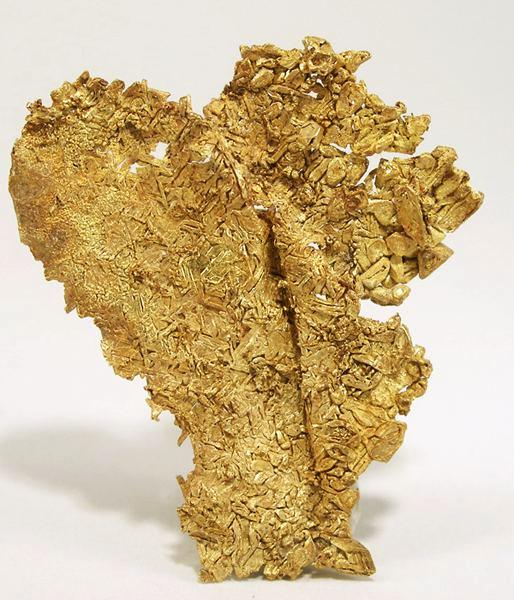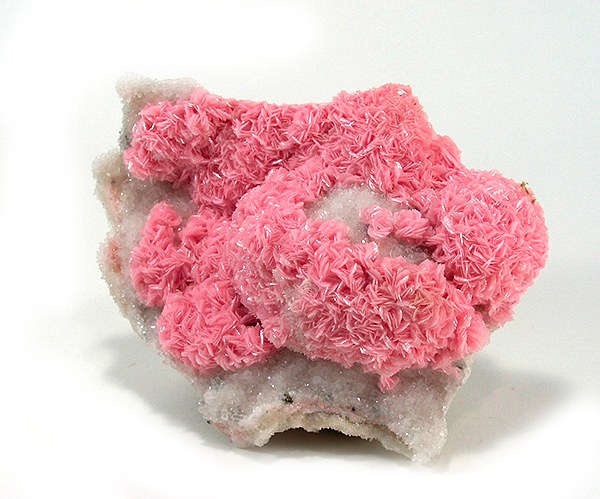Minerals from Romania - Part 1 (Introduction)
Romania has a great number of mineral species, characterized mainly by their morphological uniqueness and by their beauty, that is hardly found at other mineral samples over the world. Containing all the types of relief, Romania has a wide range of types of rocks and minerals classes, therefore we have to admit that we have a lot to talk about on this topic.
 |
| Pyrrhotite (**) |
As I already said, in Romania, the mineral diversity is so great that we can find there all the 11 mineral classes, the types counting ca. a quarter of total mineral species that we found in nature (that is ca. 4000 species). This is the immediate cause of the complex geological structure of the country.
In Romania, there are both old geological formations (dating 600 millions years ago, from the period of Precambrian), and young geological formations (such as The Danube Delta and the deposits of the rivers).
The majority of the minerals that we can find in Romania belong to the following mineral classes: sulfides, sulfosalts and silicates.
Geological stages
 |
| Semseyit, Baia Mare |
The first period or stage (which began in Cretaceous, 140-65 million years ago and lasted until Paleogene, 65-55 million years ago) is represented by a very significant magmatic activity, which led to the formation of a kind of rocks that are known today as banatites. The second period (24-5 million years ago) is represented by the intense activity of the volcanic formations that were forming in the area of the West Carpathians and of the "Metaliferi" Mountains, where andesites predominate now. The minerals that formed during these stages are usually crystalline aggregates, known in Romania as "flori de mină" (translated directly as "Mine flowers"). There are known over 30 such unique minerals that we can find over the territory of Romania. Furthermore, in Romania were discovered quite many new mineral species, and you can see some of them in the following table:
Mine flowers from Romania (*)
| Alabandite (Săcărâmb - 1784/1832) | Alloclasite (Oraviţa - 1868) |
| Andorite (Baia Sprie - 1892) | Ludwigite (Ocna de Fier - 1874) |
| Nagyagite (Săcărâmb - 1767/1845) | Petzite (Săcărâmb - 1842/1845) |
| Pseudobrookite (Uroiu - 1878) | Rhodochrosite (Cavnic - 1780/1813) |
| Semseyite (Baia Sprie - 1881) | Sylvanite (Baia de Arieş - 1786/1835) |
| Tellurium (Zlatna - 1785/1798) | Whewellite (Cavnic - 1852) |
(*) In the table are depicted the places where the minerals were discovered and the years when they were described and when they got their actual names.
The Maramureş area is very rich in mineral species, that is mainly due to the former volcanic activities that took place there. Here we can find minerals with unique crystals, with a wide range of colors, belonging from a wide number of mineral classes.
Between the most interesting minerals from Baia Mare there are the amethist (Valea Roşie), the gold (Cavnic), the chalcedony (Trestia), quartz, calcite, chalcopyrite (Baia Sprie, Băiuţ), rhodochrosite, stibine, pyrrhotite, pyrite, sphalerite, gypsum, baritine, baryte, siderite, marcasite, vivianite and wolframite.
Between the most interesting minerals from Baia Mare there are the amethist (Valea Roşie), the gold (Cavnic), the chalcedony (Trestia), quartz, calcite, chalcopyrite (Baia Sprie, Băiuţ), rhodochrosite, stibine, pyrrhotite, pyrite, sphalerite, gypsum, baritine, baryte, siderite, marcasite, vivianite and wolframite.
The Metaliferi Mountains
A great part of the specimens that come from the area of the Metaliferi Mountains have inclusions of native gold, the most important places being Musariu, Valea Morii, Brădişor, Hondol and Ormindea. In the XIX century, the amethist from Vălişoara was one of the most appreciated in the whole Europe.
 |
| Gold from Roşia Montană |
Banat
In this region we have a prevalent type of rock, known as skarns (in this category are the pyroxenes and the garnets) and the minerals associated with them (magnetite, hematite, etc.). Here, the most common minerals that are considered to be "min flowers" are the realgar, the malachite, the wollastonite and the gehlenite, which have a very beautiful appereance and therefore they are perfect for mineral collections.
Other areas
Beside these well-known areas, which are truly the most important, there are other areas that contain special minerals. "Pădurea Craiului" was a significant centre for the extraction of bauxite, and the Oriental Carpathians were used for a very big period of time for the extraction of the ores containing copper and other metals, of barite and amber. From the Meridional Carpathians were extracted ores that didn't contain metals, such as the kyanite, the spodumene, the garnets, the staurolite and the beryl. The Subcarpathians are still great areas for the extraction of salt, oil and natural gases, and we have the same situation in the Transylvanian Basin, where salt and gases are extracted in industrial quantities. Dobrogea is a great place for chalk and phosphorites extraction.
 |
| Nagyagit from Săcărâmb |
In many parts of Romania, the museums manage to preserve and show the greatest treasures of the Romanian minerals. There is a great number of such museums in Romania, the most beautiful and important being the ones from Baia Mare, Cluj, Ocna de Fier, Bucureşti, Arad, Cheia-Prahova and Colţi (where are exposed unique amber samples).
Also, because of the well-known salt-extraction tradition, many salt mines are still working and opened for the public small museums or touristic centers. The most important are: Praid, Slănic Prahova, Târgu Ocna and Ocnele Mari. Slănic Moldova is an important town because of the unique mineral springs, which are used for a wide range of illnesses. In Ploieşti is opened oil museum, since in Romania has been established the first large oil refinery in the world, in 1856.
Also, because of the well-known salt-extraction tradition, many salt mines are still working and opened for the public small museums or touristic centers. The most important are: Praid, Slănic Prahova, Târgu Ocna and Ocnele Mari. Slănic Moldova is an important town because of the unique mineral springs, which are used for a wide range of illnesses. In Ploieşti is opened oil museum, since in Romania has been established the first large oil refinery in the world, in 1856.
(**) The images that have this sign don't depict minerals extracted from Romania.
 |
| CLICK HERE TO SEE THE PART II IN ROMANIAN |

Niciun comentariu:
Trimiteți un comentariu
Salut! aştept comentariile voastre referitoare la postare şi blog!